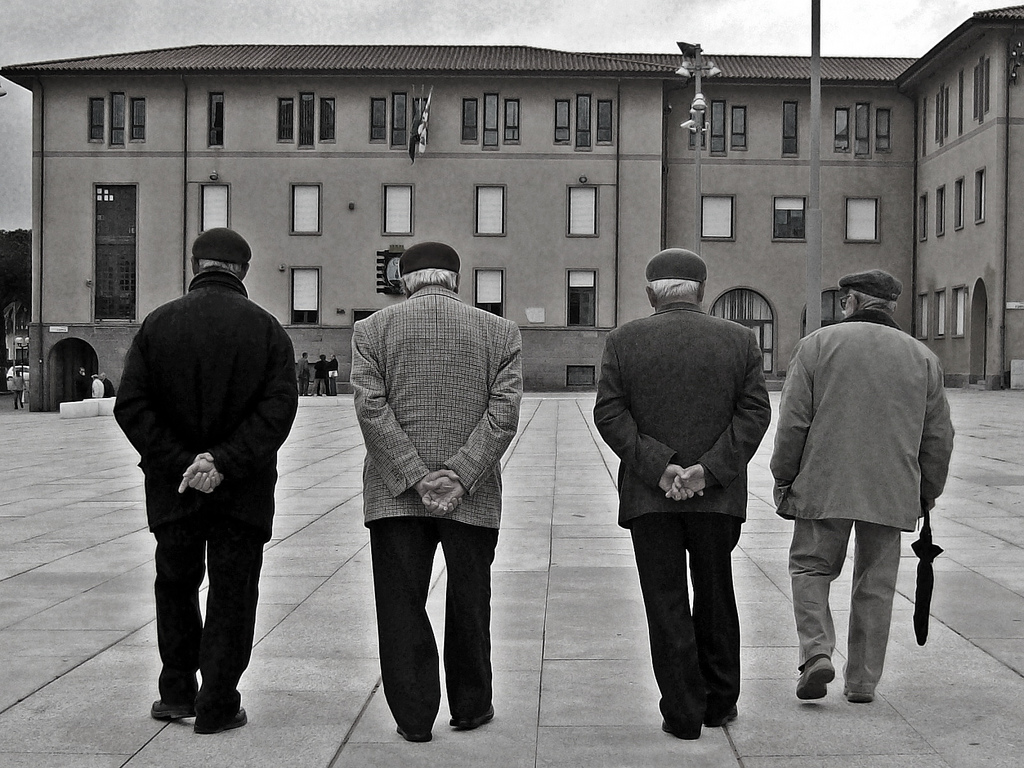Figures speak for themselves
Declining birth-rates and ageing population, while immigrant population is not big enough to initiate a positive change: EU population is doomed to age and numerically decline compared to the rest of the world. Heavy repercussions at social level. The findings of the “Demographic outlook for the European Union”

“The EU population is now growing only slowly and is even expected to decline in the longer term,” on the basis of the present trends, and thereby “it represents an ever-shrinking proportion of the world population.” These were the conclusion of the “Demographic outlook for the European Union”, the first in an annual series of surveys due to be released this year, conducted by the European Parliamentary Research Service (EPRS) in cooperation with Globalstat and the European University Institution (EUI), intended to “highlight and explain major demographic trends as they affect the European Union.”
“Smaller” at global level. In the period 1960-2017 the EU has seen a steady population growth (with reference to EU28), from 406.7 million to 511.8 million inhabitants. In 1961 there were 7.6 million live births and 4.1 million deaths, while in 2017 there were (just over) 5.1 million deaths and 5.1 million live births. The demographic growth process experienced a slowdown (with a negative trend also in 2017), and if the trend remains the same by 2050 projections suggest that EU population will reach 528.5 million before declining to 518.8 million by 2080. This figure, viewed against the backdrop of global demographic growth, shows that EU had 6.9 % of world population in 2015, projected to represent 4.9% of the 10 billion people that will inhabit planet Earth in 2055.
Ever-ageing population. The second finding that deserves in-depth reflection is population ageing: The median age in the EU-28 has risen by 15 years in the period 2001 – 2016, from 38.3 years to 42.6. In 2004 there were as many elderly people (age 65+) as children (0-14). As of 2016, people aged 60 or over made up 25.3 % of the population; people aged 80 or over amounted to 5.4% projected to reach 11.4% in 2050 while the age group 15-64, and working-age population is projected to continuously decline. In 2080 there will be five people in working age for every four people aged 65 or over or children, namely, the two groups “dependent” on the support of others, with consequences on the economy, labour market, healthcare, pensions. Differences were obviously recorded at national level in EU-28, but the underlying trend remains the same. Today Ireland’s population remains the youngest in the EU-28, at 36.6 years, while Germany is the oldest (45.8). Italy will have the highest median age of 50 years in 2029.
 Trend reverse. Changes in the present trend depend on three factors: changes in life-expectancy, fertility, free movement, as well as external migration. Women’s life expectancy at birth increased from 72.4 years in the period 1960-65 to 82.7 today, while men went from 67 to 77 years in the same period. However, life-expectancy increase doesn’t necessarily imply “disability-free life expectancy.” Total fertility rates for EU-28 in 2015 stood at 1.58 (France, Ireland, Sweden and UK at over 1.8, and Poland, Spain, Italy and Greece slightly over 1.3). Finally, migration inflows in the years 2014-2016 amounted to 2 million “legal” migrants and 1.5 irregular migrants. This population inflow “can contribute to the mitigation of ageing societies” but not to the extent of “compensating for it.” Immigration also fails to meet economic challenges in the light of two factors: the mean unemployment rate of refugee and immigrant population is higher than EU nationals while their competences and professional qualifications in most cases don’t meet job market demands of increasingly skilled labour.
Trend reverse. Changes in the present trend depend on three factors: changes in life-expectancy, fertility, free movement, as well as external migration. Women’s life expectancy at birth increased from 72.4 years in the period 1960-65 to 82.7 today, while men went from 67 to 77 years in the same period. However, life-expectancy increase doesn’t necessarily imply “disability-free life expectancy.” Total fertility rates for EU-28 in 2015 stood at 1.58 (France, Ireland, Sweden and UK at over 1.8, and Poland, Spain, Italy and Greece slightly over 1.3). Finally, migration inflows in the years 2014-2016 amounted to 2 million “legal” migrants and 1.5 irregular migrants. This population inflow “can contribute to the mitigation of ageing societies” but not to the extent of “compensating for it.” Immigration also fails to meet economic challenges in the light of two factors: the mean unemployment rate of refugee and immigrant population is higher than EU nationals while their competences and professional qualifications in most cases don’t meet job market demands of increasingly skilled labour.
A clear message. The researchers’ message to policy-makers is crystal clear: “Policies to alter future demographics are limited and insofar as they are effective they take time to have an impact.”. Therefore, over the short and middle term the focus will be about “adapting and smoothing the transition to an older EU.”
 Revolutionizing healthcare. In this scenario, healthcare sustainability is probably the major challenge, which is also a limit of the EU survey. Ageing population corresponds to “growing chronic diseases and multi-pathologies” leading to a “higher demand of healthcare services”; this implies the need for an appropriate number of health professionals with the risk of inequitable access to healthcare. The fact that government expenditure on health in 2015 accounted for just 7.2 % of GDP in the EU-28 is an important benchmark. The indications provided in the survey – based on the fact that the EU has just a “supporting competence in health” and thus cannot adopt nationally-binding policies – follow a threefold direction: to encourage a revision of health systems to make them “more resilient and better able to cope with the challenges ahead”; to focus on prevention – especially by promoting healthier lifestyles – and on “keeping people healthy” into old age”; to counter health-related behaviours in adolescents that contribute to “chronic diseases in adulthood,” notably excess weight in childhood, currently representing “a major problem involving EU-28 public health systems.”
Revolutionizing healthcare. In this scenario, healthcare sustainability is probably the major challenge, which is also a limit of the EU survey. Ageing population corresponds to “growing chronic diseases and multi-pathologies” leading to a “higher demand of healthcare services”; this implies the need for an appropriate number of health professionals with the risk of inequitable access to healthcare. The fact that government expenditure on health in 2015 accounted for just 7.2 % of GDP in the EU-28 is an important benchmark. The indications provided in the survey – based on the fact that the EU has just a “supporting competence in health” and thus cannot adopt nationally-binding policies – follow a threefold direction: to encourage a revision of health systems to make them “more resilient and better able to cope with the challenges ahead”; to focus on prevention – especially by promoting healthier lifestyles – and on “keeping people healthy” into old age”; to counter health-related behaviours in adolescents that contribute to “chronic diseases in adulthood,” notably excess weight in childhood, currently representing “a major problem involving EU-28 public health systems.”